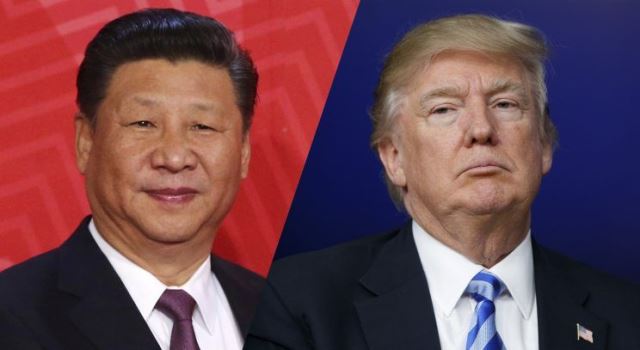- President Trump announced fresh tariffs on $50 billion in Chinese goods on Friday.
- The move prompted swift retribution from Beijing.
- The tense situation is slowing shipments at ports and airfreight terminals and boosting raw materials prices.
Only a few months ago, the global economy appeared to be humming, with all major nations growing in unison. Now, the world’s fortunes are imperiled by an unfolding trade war.
As the Trump administration imposes tariffs on allies and rivals alike, provoking broad retaliation, global commerce is suffering disruption, flashing signs of strains that could hamper economic growth. The latest escalation came on Friday, when President Trump announced fresh tariffs on $50 billion in Chinese goods, prompting swift retribution from Beijing.
As the conflict broadens, shipments are slowing at ports and airfreight terminals around the world. Prices for crucial raw materials are rising. At factories from Germany to Mexico, orders are being cut and investments delayed. American farmers are losing sales as trading partners hit back with duties of their own.
Workers in a Canadian steel mill scrambled to recall rail cars headed to the United States border after Mr. Trump this month slapped tariffs on imported metals. A Seattle customer soon canceled an order.
“The impact was felt immediately,” said Jon Hobbs president of AltaSteel in Edmonton. “The penny is really dropping now as to what this means to people’s businesses.”
The Trump administration portrays its confrontational stance as a means of forcing multinational companies to bring factory production back to American shores. Mr. Trump has described trade wars as “easy to win” while vowing to rebalance the United States’ trade deficits with major economies like China and Germany.
Mr. Trump’s offensive may yet prove to be a negotiating tactic that threatens economic pain to force deals, rather than a move to a full-blown trade war. Americans appear to be better insulated than most from the consequences of trade hostilities. As a large economy in relatively strong shape, the United States can find domestic buyers for its goods and services when export opportunities shrink.
Even so, history has proved that trade wars are costly while escalating risks of broader hostilities. Fears are deepening that the current outbreak of antagonism could drag down the rest of the world.
Before most trade measures fully take effect, businesses are already grappling with the consequences — threats to their supplies, uncertainty over the terms of trade and gnawing fear about what comes next.
“Just talking about protectionism is causing trouble,” said Marie Owens Thomsen, global chief economist at Indosuez Wealth Management in Geneva. “It’s an existential risk to the world economy.”
After two years of expansion, airfreight traffic was flat over the first three months of the year, according to the International Air Transport Association. Dips have been especially pronounced in Europe and Asia.
Container ships, the workhorses of global commerce, have seen no growth in freight since last fall in seasonally adjusted terms, according to a key index.
A gauge of world trade tracked by Oxford Economics, a research firm in London, recently registered its weakest showing since early 2017.
“Let us not understate the macroeconomic impact,” the managing director of the International Monetary Fund, Christine Lagarde, warned this past week about trade conflicts. “It would be serious, not only if the United States took action, but especially if other countries were to retaliate, notably those who would be most affected, such as Canada, Europe and Germany.”
Threats to trade are emerging just as the global economy contends with other substantial challenges.
The Trump administration’s decision to reinstate sanctions on Iran has lifted oil prices, adding pressure to importers worldwide. Europe’s economy is weakening, with Germany — the continent’s largest economy — especially vulnerable. Central banks in the United States and Europe are withdrawing the cheap money they sent coursing through the global financial system after the crisis of 2008, lifting borrowing costs.
The Trump administration has embroiled the United States in increasingly acrimonious conflicts with huge trading partners.














